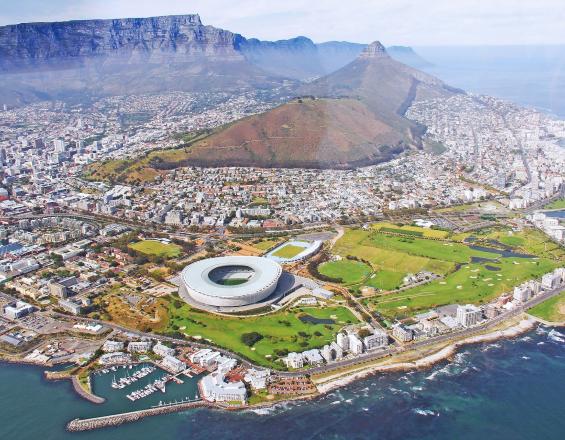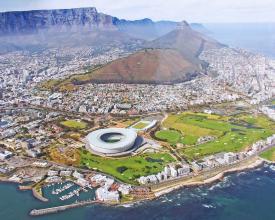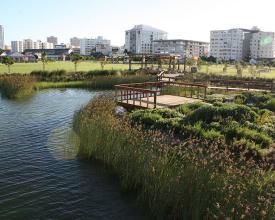
Showcasing local biodiversity outside Cape Town Stadium

In the heart of Cape Town, South Africa, lies the 12.5 ha Green Point Park. This recreational green space was redesigned as part of the construction of the Cape Town Stadium ahead of the FIFA World Cup back in 2010. The redesign included the creation of the Biodiversity Showcase Garden. The main goal of this garden was to highlight the unique Cape Flats Sand Fynbos habitat, which historically could be found throughout the Cape Town region. The rich biodiversity found within this type of habitat is endemic to the region but threatened by pressures such as urbanization. Three thematic areas in the garden include people and plants, the discovering biodiversity trail and the wetland walk. Displays hidden in and amongst the plants feature original artworks and interpretive boards with illustrations and photographs for people to explore this learn about the city's remarkable native biodiversity.
Impacts
The Biodiversity Showcase garden was developed to show the use of native plants in landscaping and to emphasize the diversity of species native to Cape Town ecosystems. Some 300 native plant species have been planted throughout. While Green Point Park is primarily managed for recreational and social benefits rather than for wildlife, the use of native plants, interactive signage, and artistic representation of local animals fills the important role of educating visitors about the natural ecosystem and connecting them with the local environment.




